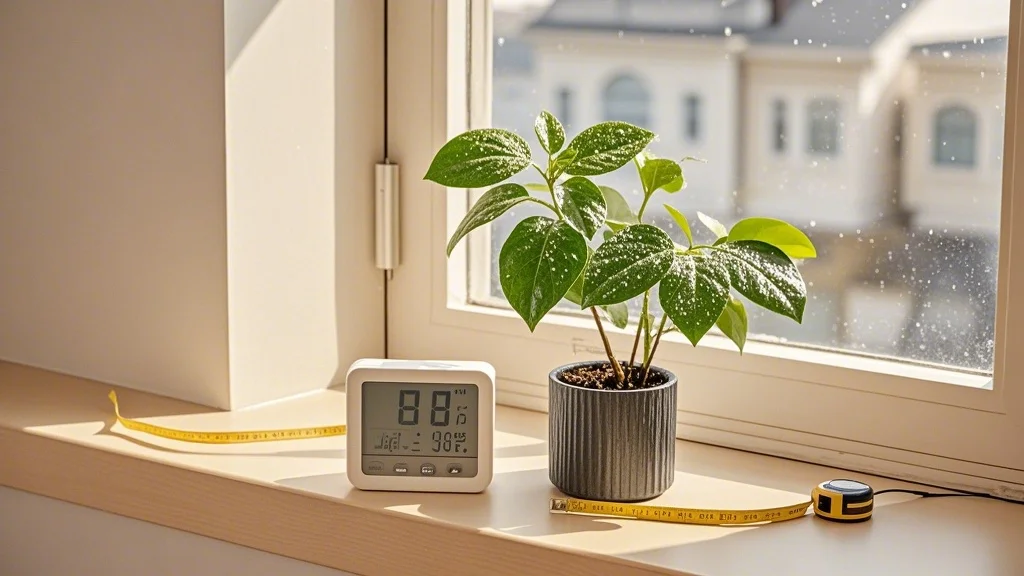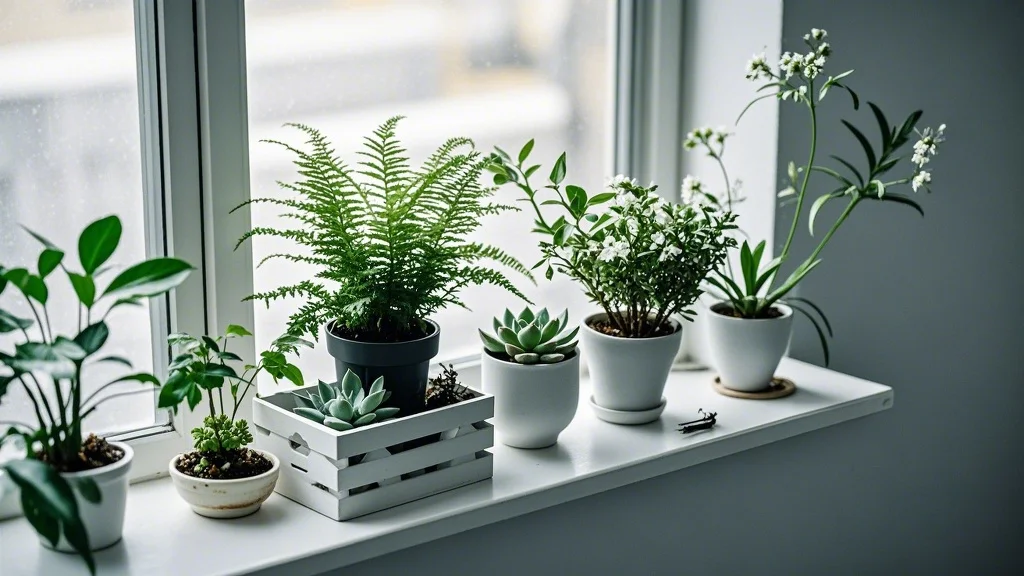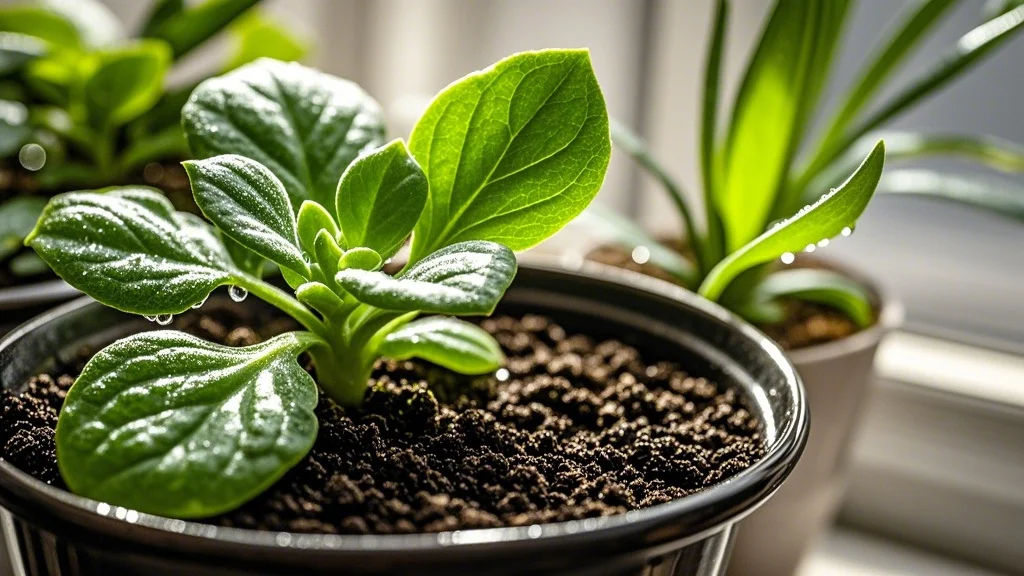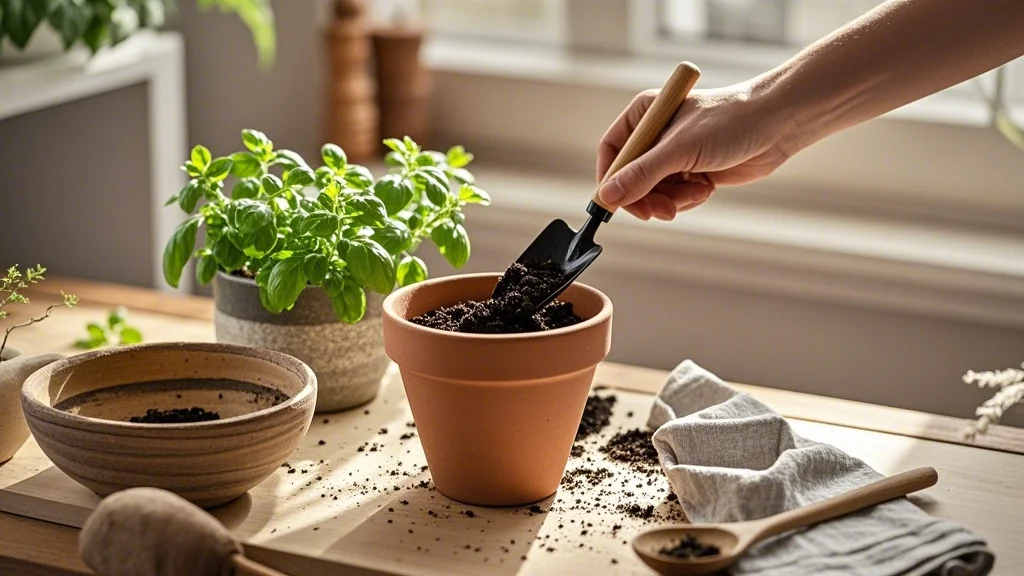The humble windowsill represents prime real estate for urban gardeners. These narrow ledges offer direct access to that most precious resource for plants—natural sunlight—while requiring minimal floor space in often cramped city apartments. A thoughtfully designed windowsill garden can transform an ordinary window into a lush microhabitat that brings nature indoors, improves air quality, and provides fresh herbs for cooking.
However, windowsill gardening comes with unique challenges. The limited space demands strategic planning, careful plant selection, and creative solutions to maximize growing potential. This guide will walk you through everything you need to know to design a thriving windowsill garden that makes the most of your limited space while creating a beautiful display that enhances your home.
Contents
- 1 Assessing Your Windowsill Space
- 2 Selecting the Right Plants
- 3 Container Solutions for Limited Space
- 4 Arrangement Strategies
- 5 Maximizing Vertical Space
- 6 Soil and Watering Solutions
- 7 Seasonal Considerations
- 8 Maintenance in Limited Space
- 9 Creative Display Ideas
- 10 Troubleshooting Common Windowsill Garden Issues
- 11 Conclusion
Assessing Your Windowsill Space

Before purchasing a single plant or container, take time to evaluate your windowsill environment:
Light Conditions
The direction your window faces significantly impacts the amount and quality of light available:
- South-facing windows: Receive the most direct sunlight (6+ hours daily), ideal for sun-loving plants like succulents, cacti, and many herbs.
- East-facing windows: Get gentle morning sun (4-6 hours), perfect for plants that prefer moderate light like African violets and some ferns.
- West-facing windows: Receive afternoon sun that can be intense and hot, suitable for plants that tolerate bright indirect light.
- North-facing windows: Provide the least direct sunlight, best for shade-tolerant plants like pothos, snake plants, and peace lilies.
Take note of any external factors affecting light, such as nearby buildings, trees, or overhangs that create shade during certain hours.
Temperature Fluctuations
Windows can experience significant temperature variations:
- Winter drafts may create cold zones unsuitable for tropical plants
- Summer heat can intensify near glass, potentially scorching sensitive foliage
- Heating vents or radiators below windows can create dry, hot conditions
Use a thermometer to monitor temperature variations throughout the day and seasons.
Measuring Your Space
Precise measurements are crucial for planning:
- Width: Measure the entire length of available sill space
- Depth: Determine how far pots can extend without risk of falling
- Height: Consider the vertical space available before hitting the window frame
- Weight capacity: Most residential windowsills can support 5-10 pounds per linear foot
Selecting the Right Plants

The key to a successful windowsill garden is choosing plants that will thrive in your specific conditions while fitting the physical constraints.
Size-Appropriate Plants
Look for naturally compact varieties or those that can be maintained at a small size:
- Miniature varieties: Many plants come in dwarf forms specifically bred for small spaces
- Slow-growing species: Plants with a naturally slow growth habit require less frequent pruning
- Shallow-rooted plants: These require less soil depth, allowing for smaller containers
Light-Matched Plants
Select plants based on your window’s light conditions:
For bright, direct light (south/west windows):
- Succulents (echeveria, haworthia, sedum)
- Cacti
- Herbs (rosemary, thyme, sage, lavender)
- Geraniums
- Miniature citrus
For medium light (east windows):
- Herbs (mint, parsley, chives)
- African violets
- Rex begonias
- Peperomia varieties
- Compact ferns
For low light (north windows):
- Pothos
- Snake plant
- ZZ plant
- Peace lily
- Spider plant
Functional Plant Groupings
Consider creating themed collections based on use:
- Culinary herb garden: Basil, chives, thyme, oregano, mint
- Succulent display: Mix of textures and colors that all share similar care needs
- Air-purifying collection: Spider plants, pothos, peace lilies
- Flowering display: African violets, kalanchoe, miniature roses
- Microgreens garden: Fast-growing edible seedlings for harvesting
Container Solutions for Limited Space
The right containers can dramatically increase your growing capacity while enhancing the aesthetic appeal of your windowsill garden.
Space-Maximizing Containers
- Tiered planters: Vertical designs that hold multiple plants in a small footprint
- Window boxes: Long, narrow containers that maximize the sill’s length
- Railing planters: Hang on the outside of the window (where permitted) to free up interior sill space
- Magnetic or suction planters: Attach directly to the window glass or frame
- Hanging containers: Suspend from curtain rods or ceiling hooks near the window
Material Considerations
- Lightweight options: Plastic, fiberglass, or composite materials reduce weight load
- Self-watering containers: Reduce maintenance and provide consistent moisture
- Terracotta: Excellent for plants that prefer dry conditions but heavier and more fragile
- Fabric pots: Breathable, lightweight, and often foldable for storage
DIY Container Ideas
- Repurpose tea tins, mason jars, or vintage containers for a personalized look
- Create a vertical garden using a shoe organizer hung beside the window
- Convert wooden wine boxes into herb planters
- Use magnetic spice containers for microgreens or small succulents
- Transform empty eggshells in an egg carton for starting seedlings
Arrangement Strategies
Strategic placement is essential for both plant health and visual appeal.
Layering Techniques
Create depth and maximize space by arranging plants in layers:
- Front row: Shortest plants or trailing varieties that can cascade over the edge
- Middle row: Medium-height plants that won’t block light from reaching others
- Back row: Taller plants that can extend upward without touching the glass
- Hanging elements: Plants suspended from above to utilize vertical space
Visual Design Principles
Apply basic design concepts for an aesthetically pleasing display:
- Repetition: Use similar containers or plant types for cohesion
- Rhythm: Create visual movement through alternating heights or colors
- Balance: Distribute visual weight evenly across the windowsill
- Focal point: Include one standout element (a flowering plant or unique container)
- Scale: Ensure all elements are proportional to the space
Functional Groupings
Arrange plants based on care needs for easier maintenance:
- Group plants with similar watering requirements together
- Position sun-loving plants where they’ll receive the most light
- Place heat-sensitive plants away from radiators or heating vents
- Keep frequently harvested herbs in the most accessible positions
Maximizing Vertical Space
When horizontal space is limited, think upward.
Vertical Growing Systems
- Tiered plant stands: Place beside the window to create multiple growing levels
- Wall-mounted planters: Install near the window to expand growing area
- Tension rod systems: Create adjustable hanging space between window frames
- Window plant shelves: Attach to the window frame for additional display surfaces
- Macramé hangers: Suspend plants at varying heights near the window
Climbing Plants and Supports
- Install small trellises for vining plants like ivy or jasmine
- Use adhesive hooks on window frames to guide climbing plants
- Create string walls for plants like peas or beans to climb
- Train trailing plants to grow around the window frame
Utilizing Window Frames
- Attach small shelves to window frames for additional plant placement
- Use tension rods to create plant hanging systems within the window
- Install curtain rod brackets as plant hangers
- Apply suction cup hooks to glass for lightweight hanging plants
Soil and Watering Solutions
Proper soil selection and watering techniques are crucial in small container gardens.
Space-Saving Soil Options
- Lightweight potting mixes: Reduce weight while providing good drainage
- Soilless media: Coir or peat-based mixes that are lightweight and moisture-retentive
- Self-watering granules: Reduce watering frequency and prevent overwatering
- Compressed soil discs: Expand when needed, saving storage space
Efficient Watering Methods
- Bottom watering: Place containers in a shallow tray of water to allow absorption from below
- Drip irrigation: Mini systems designed for indoor use with timers
- Water globes or spikes: Slow-release watering devices that reduce frequency
- Moisture meters: Monitor soil conditions to prevent over or under-watering
- Misting systems: For humidity-loving plants in dry environments
Drainage Solutions
Proper drainage is essential but can be challenging on windowsills:
- Use saucers that complement your decor to catch excess water
- Create a pebble tray system that increases humidity while containing moisture
- Select containers with built-in drainage management
- Use moisture-wicking mats under containers to absorb excess water
Seasonal Considerations
Windowsill gardens require adjustments throughout the year.
Winter Adaptations
- Install window insulation film to protect plants from cold drafts
- Move sensitive plants away from the glass during extreme cold
- Consider supplemental lighting during shorter winter days
- Reduce watering frequency as growth slows
- Watch for dry air from heating systems and increase humidity if needed
Summer Adjustments
- Use sheer curtains to diffuse intense summer sunlight
- Rotate plants regularly as sun angles change
- Increase watering frequency during hot periods
- Move heat-sensitive plants during peak afternoon sun
- Consider temporary relocation during vacation periods
Seasonal Plant Rotation
- Switch out plants seasonally to maintain optimal growing conditions
- Grow cool-season herbs in winter and heat-loving varieties in summer
- Bring outdoor container plants to windowsills during winter months
- Start seedlings on windowsills in spring before moving them outdoors
Maintenance in Limited Space
Efficient maintenance routines are essential for small-space gardening.
Space-Saving Tools
- Collapsible watering cans that store flat
- Multi-purpose tools that combine functions (pruner/cultivator)
- Spray bottles for misting and gentle watering
- Mini pruning shears for precise trimming
- Narrow-spouted watering devices for reaching tight spaces
Efficient Care Routines
- Establish a regular inspection schedule to catch issues early
- Rotate plants weekly for even growth and light exposure
- Keep a small container for collecting trimmed leaves and debris
- Use a handheld vacuum for quick cleanup of soil spills
- Maintain a care journal or app to track watering and fertilizing schedules
Pest Management in Close Quarters
- Inspect new plants thoroughly before adding to your windowsill
- Use yellow sticky traps to monitor for flying pests
- Keep neem oil spray handy for early intervention
- Isolate affected plants immediately at first sign of pests
- Consider beneficial insects like ladybugs for natural pest control
Creative Display Ideas
Transform your windowsill garden into a design feature with these creative approaches.
Themed Gardens
- Culinary windowsill: Herbs arranged by cuisine type
- Succulent landscape: Create a miniature desert scene
- Fairy garden: Tiny decorative elements among small plants
- Color-themed display: Plants selected for coordinated foliage or flower colors
- Seasonal showcase: Plants and decorations that change with the seasons
Decorative Elements
- Use decorative stones or colored glass as top dressing
- Incorporate miniature garden ornaments or figurines
- Add small mirrors to reflect light and create the illusion of space
- Include battery-operated string lights for evening ambiance
- Arrange plants in vintage containers for character
Integrated Design
- Coordinate plant containers with room decor colors
- Use windowsill gardens as living curtains or privacy screens
- Create a cohesive look by using containers of similar material but varying heights
- Install floating shelves beside windows to extend the garden display
- Use plants to frame views rather than block them
Troubleshooting Common Windowsill Garden Issues
Even well-planned windowsill gardens can encounter problems. Here are solutions to common challenges:
Limited Growth Space
- Regularly prune plants to maintain appropriate size
- Divide overcrowded plants and share with friends
- Practice bonsai techniques for naturally larger species
- Select naturally compact varieties or dwarf cultivars
- Implement rotation systems, moving some plants to other locations periodically
Uneven Light Distribution
- Rotate plants regularly (every 3-4 days) for even growth
- Use reflective surfaces to bounce light to shadier areas
- Position plants based on light needs (high-light plants closest to glass)
- Consider supplemental grow lights for darker periods
- Prune selectively to allow light penetration to lower plants
Temperature Extremes
- Create buffer zones between plants and glass in extreme weather
- Use thermal curtains at night during winter
- Place heat-sensitive plants on risers to elevate from hot radiators
- Apply window films that reduce heat transfer
- Use small fans for air circulation during temperature extremes
Conclusion
A windowsill garden represents the perfect marriage of form and function for urban dwellers with limited space. By thoughtfully assessing your conditions, selecting appropriate plants, and implementing creative space-maximizing solutions, even the narrowest ledge can become a thriving garden that brings nature’s beauty indoors.
Remember that successful windowsill gardening is an evolving process. Start small, observe how plants respond to your specific conditions, and adjust accordingly. Over time, you’ll develop an intuitive understanding of your microclimate and the confidence to experiment with new plants and arrangements.
Whether you’re growing culinary herbs for fresh cooking ingredients, cultivating flowering plants for color and fragrance, or simply creating a green sanctuary in your urban home, your windowsill garden can become a source of daily joy and connection to the natural world—proof that you don’t need acres of land to experience the rewards of gardening.








